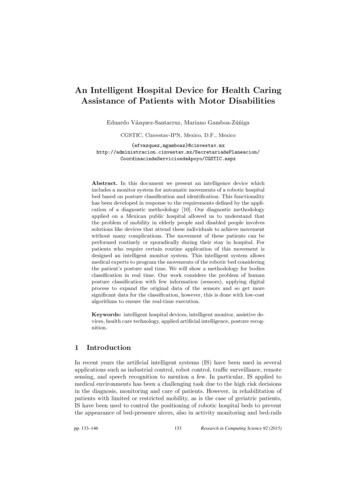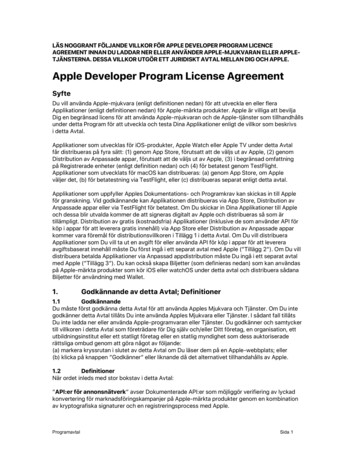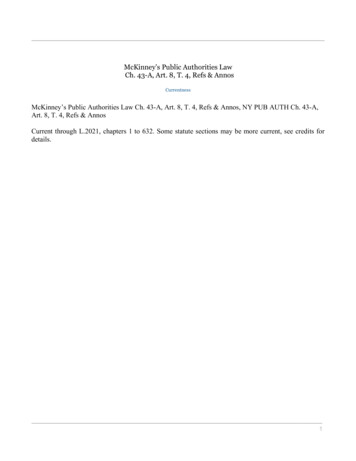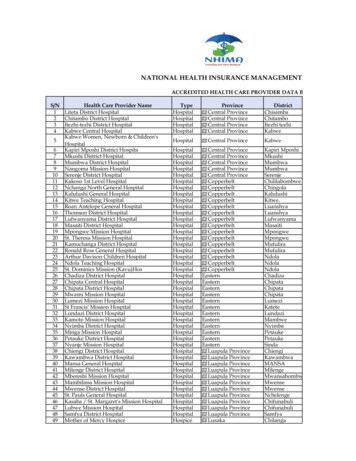
Transcription
An Intelligent Hospital Device for Health CaringAssistance of Patients with Motor DisabilitiesEduardo Vázquez-Santacruz, Mariano Gamboa-ZúñigaCGSTIC, Cinvestav-IPN, Mexico, D.F., rdinacindeServiciosdeApoyo/CGSTIC.aspxAbstract. In this document we present an intelligence device whichincludes a monitor system for automatic movements of a robotic hospitalbed based on posture classification and identification. This functionalityhas been developed in response to the requirements defined by the application of a diagnostic methodology [10]. Our diagnostic methodologyapplied on a Mexican public hospital allowed us to understand thatthe problem of mobility in elderly people and disabled people involvessolutions like devices that attend these individuals to achieve movementwithout many complications. The movement of these patients can beperformed routinely or sporadically during their stay in hospital. Forpatients who require certain routine application of this movement isdesigned an intelligent monitor system. This intelligent system allowsmedical experts to program the movements of the robotic bed consideringthe patient’s posture and time. We will show a methodology for bodiesclassification in real time. Our work considers the problem of humanposture classification with few information (sensors), applying digitalprocess to expand the original data of the sensors and so get moresignificant data for the classification, however, this is done with low-costalgorithms to ensure the real-time execution.Keywords: intelligent hospital devices, intelligent monitor, assistive devices, health care technology, applied artificial intelligence, posture recognition.1IntroductionIn recent years the artificial intelligent systems (IS) have been used in severalapplications such as industrial control, robot control, traffic surveillance, remotesensing, and speech recognition to mention a few. In particular, IS applied tomedical environments has been a challenging task due to the high risk decisionsin the diagnosis, monitoring and care of patients. However, in rehabilitation ofpatients with limited or restricted mobility, as is the case of geriatric patients,IS have been used to control the positioning of robotic hospital beds to preventthe appearance of bed-pressure ulcers, also in activity monitoring and bed-railspp. 133–146133Research in Computing Science 92 (2015)
Eduardo Vazquez-Santacruz, Mariano Gamboa-Zúñigacontrol [13,14,15,16]. Most of the systems for automatic control of hospitalbed positions are based in the detection of the posture of patients on the bedusing presence sensors, digital cameras, thermal cameras and mattress pressuresensors [19,20,21]. Modern hospital beds are able to adopt twelve positionsranging from the home position to the sit-to-stand position, but do not havea mechanism to prevent accidents when the change of positions takes place.Some of the most common accidents when the bed is moving are the downfall of patients, bad posture when the bed is moving, and injuries caused byimproper use of motion controls. In this research we propose an IS in orderto reduce the risks of operating a hospital bed with multiple-positions. Themain objective of our IS is to prevent accidents when the bed is moving, thisis done by detecting the posture of patients using a mattress pressure sensor.We identify the posture of patients by performing an analysis and classificationof the pressure distributions using an initial training set of correct postures forall bed positions. The proposed IS can be used to assists the medical staff andalso provides a mechanism for an automatic and non-assisted control of bedpositioning. Monitoring of leaning people is often used in a variety of hospitalFig. 1. Transition graph of all possible positions of the robotic hospital bed.process as geriatrics, rehabilitation, orthopedics and even used in psychology andsleep studies [22]. Although patients monitoring is usually doctors and nursesactivity, this can be automated to have better control of the patients in anytime [20] doing human intervention only to rate different positions for whichpatient has passed, the time spent in each posture and incurred transitions.This automatization process is not new, as there are many attempts to recognize the position of a body in a given surface [20,13,14,16,15], most of thesystems for posture recognition are based on the detection of the posture ofpatients on the bed, using presence sensors, digital cameras, thermal cameras ormattress pressure sensors [19,20,21]. Digital and thermal cameras achieve highresolution. However, they are affected by environment illumination, temperatureResearch in Computing Science 92 (2015)134
An intelligent hospital device for health caring assistance of patients with motor disabilitiesconditions and occlusions. Mattress pressure sensors are invariant to illuminationand temperature conditions, all the same these sensors have a limited resolutionand accuracy. Commercial pressure sensors are available with resolutions from4 to 1024 sensor units, higher resolution are prohibitively expensive for manyapplications. Recent developments in the fabrication of low cost pressure matrixsensors are based on organic devices. In [23] a flexible 32 32 array of pressuresensors have been developed for skin sensitivity with a density of 10 units perinch, it is based on organic field-effect transistors. However, it is limited tosmall areas and are mostly used in applications such as tactile displays andmobile devices. In [24] pressure sensors based on organic thin film transistors wasdeveloped and applied to wearable electronics, textiles and skin for robots. Onthe other hand, proposed pressure sensors using resistive devices have been testedat highly sensitivity and very short response times that can be inexpensivelyfabricated over large areas [25,26]. Thus, given the high cost in the fabricationof array pressure sensors, is necessary a methodology that use the few datato solve the classification issue. We choose four basic positions according to thefamous study by professor Chris Idzikowski [22], who classified the most commonsleeping positions in six classes, that is, foetus, log, yearner, soldier, freefaller andstarfish. These positions can be grouped in four basic classes: left lateral decubitusposition or foetus, right lateral decubitus position of which the log and yearnerpositions belong to this class, supine position of which the soldier and starfishbelong to this class, and prone position or freefaller. We use a flexible arraypressure sensor with 448 units distributed in an area of 1860 886 mm. Thepressure sensors are based on variable resistive sensors at 4096 pressure levelsand normal resistance from 1 to 50 kiloOhm [27]. We construct a database withpressure levels (scaled to 0-255 range) transformed by a normalization processand apply it the HOG algorithm [17], the database contain samples of fourpostures showed in Fig. 1. With this database, we can construct a classificationmodel using a support vector machine (SVM) classifier [28]. Section 2 explainsthe intelligent monitor which controls the robotic bed, in section 3 we refer to theimage descriptors. Section 4 describes the way in which we make the recognitionof the position of patients. Section 5 shows some results and finally Section 6refers about conclusions.2Intelligence System for Automatic Control of BedPositionsA robotic hospital bed is able to adopt several positions depending on theneeds for a particular patient, also can be programmed to perform a seriesof movements in a period of time. We have a transition diagram (Fig. 1) ofour robotic hospital bed of the most used positions by medical specialists. Theinitial position is the home position to which all other positions can reach, withthe exception of the sit-to-stand position. The transitions of the robotic bed areperformed by means of mechanical actuators, and the time it takes to go fromone position to another depends on the weight of the patient and the current135Research in Computing Science 92 (2015)
Eduardo Vazquez-Santacruz, Mariano Gamboa-Zúñigaposition. When a transition is performed may happen that the patient falls or canbe hurt by being in a bad posture, even when a specialist is operating the roboticbed. The IS will be able to detect if the patient is in a correct position in order toperform the requested transition, and will send a visible alert to prevent possibledownfalls. The Fig. 3 shows the main stages of the IS for the posture recognition:in the initial stage the pressure distributions is obtained from the pressure sensorarray, in the second and third stages an analysis and pre-processing is performed,also a feature extraction using HOG [17] and SHIFT [18] descriptors are appliedover the pressure distributions that are considered as gray scale images; in thefourth stage a database of features is constructed, and in the last two stageswe construct a model for feature classification and prediction, we compare theresults of three classifiers such as Support Vector Machines, Decision Trees andBayes-naives Networks. To simplify the posture recognition we consider threebasic postures: the right lateral decubitus, supine and the left lateral decubituspositions (see Fig. 2), and since that the prone position is almost the sameas the supine position, its detection is achieved by an analysis of the pressuredistribution. The Fig. 2 shows the three basic correct positions displayed as grayscale images, obtained from simulated data of the pressure sensor array.Right lateral decubitus (RLD)SupineLeft lateral decubitus (LLD)Fig. 2. Three basic correct positions obtained from simulated data.Thus, the database of features (see Fig. 3) is constructed such as it containsthree set of equal size of the three basic positions and an appropriate numberof its variants. The database of features is then used to construct the model ofthe classifier in order to make predictions of pressure distributions that do notbelong to the database.3Image DescriptorsFinally, the IS for posture recognition can be used to control the actuators ofthe robotic hospital bed in a semi-or automatic way, and can prevent accidentswhen the bed is moving slowly. Thus, when a bad posture is detected then theResearch in Computing Science 92 (2015)136
An intelligent hospital device for health caring assistance of patients with motor disabilitiesFig. 3. Main blocks of the IS for posture recognition.IS send a signal to the actuators either to stop the transition movement or toreturn to the previous position. A descriptor is a representation of an image,it characterizes the most important features of interest. Descriptors are used inmany applications such as image classification and recognition. For these tasks,the desired properties of an image descriptor are the invariance with respectto rotation, scaling, perspective and illumination,several descriptors exist asSIFT [32], SURF [33], DENSE-SIFT [34] and others, but given the features ofour image (low quality and gray scale) and mainly due their low computationalcost, we decide to use the HOG descriptor, in experiments, HOG showed superiorresults at runtime compared to SIFT, Dense-SIFT and SURFT; commonly usedin posture recognition works [35].a) LLD (class 1) b) RLD (class 2)c) Supine (class 3) d) Prone (class 4Fig. 4. Simulated basic posture positions.3.1HOG descriptorHOG (Histogram of Oriented Gradients) descriptor is used in computer visionand image processing for object detection. This descriptor is based on the numberof occurrences of the gradient directions in specific parts in an image. The mainidea behind the HOG descriptor is that the local shape and appearance can137Research in Computing Science 92 (2015)
Eduardo Vazquez-Santacruz, Mariano Gamboa-Zúñigabe described as the distribution of gradient intensities. Based on that fact, animage is divided in several overlapping blocks, and for each block a histogram ofgradient directions is computed. Thus, the HOG descriptor is the compositionof all histograms for each block. Fig. 5 shows an example of a simulated pressureimage and its gradient directions. The size of the HOG descriptor depends onthe size of the blocks and on the number of bins in which the interval from0 to 180 degrees is divided. We use the HOG descriptor to characterize eachpressure image. Therefore, for each pressure map, a vector of gradient directionsis constructed. We consider that the histogram of gradient directions can beused for image classification, since that small changes in the pressure images areeasily detected as changes in gradient directions.Fig. 5. From left to right: simulated pressure map and image gradient directions.4Methodology for Posture RecognitionThe proposed methodology takes the raw data of sensors and transforms it intoHOG image, this representation as HOG image will be used as input in oneSVM classifier, the final output is the classifier prediction about the position.Our system receives as input one array of 448 elements, with pressure levels(0-4096 units of pressure), each of which represents one sensor in the surfacewhere a person is lying down, these sensors are distributed in 32 rows and 14columns. Fig. 6 shows the main blocks of the proposed methodology for posturerecognition. In the initial stage, the pressure distribution is obtained from thepressure sensor array, data obtained of the sensors is in range of 0 to 4096 levelsof pressure, where 0 is the maximum pressure possible and 4096 is null pressure.Then, in the second block we transform raw data taking three considerations,first, the pressure applied by human body (considering weight between 40 to150 Kg) is between 2500 to 4096 in the scale of pressures (see Fig. 7), thenwe can cut the range only to human body requirements and gain definition.Second consideration is an array escalation from 2500-4096 scale to 0-255 scalefor process the array as gray scale image in the next block. The final considerationof the second block is applying a scale algorithm for images to obtain interpolatedimage of raw pressure data. In third stage, we use a feature extraction using HOGResearch in Computing Science 92 (2015)138
An intelligent hospital device for health caring assistance of patients with motor disabilitiesdescriptor and applying it to the pressure distributions that are considered asgray scale images. In the stage delimited with broken line, we make the SVMmodel, the first three stages are repeated several times with one human bodyin different positions (we consider positions described in Fig. 3), and we makea data base with these, after we use these data base for make a SVM model,how we know the position in the which was taken each measurement, we havea pressure interpolated and classified data base, then we can construct a SVMmodel that predicts the four positions of the Fig. 3. When SVM model is ready,we can use it in order to monitor person movements, the fourth stage implies totake this SVM model and to use it as input the first three stages output, thenthe fifth stage have an accurate prediction.Fig. 6. Main blocks of methodology for posture recognition55.1ResultsPressure Maps DatabaseThe pressure sensors array consists of two independently modules with a resolution of 16 14 units in an area of 930 886 mm. Each pressure sensor has a2response between 0 to 25 kg/cm . We develop an interface to synchronize thetwo modules at a frequency of 100 measurements per second. We construct fourdifferent pressure map data set for classification: Each data set consists of fourclasses, for every posture position (see Fig. 3). For each class we generated 501instances. We choose this number of instances according to study in [36]. Eachdata set has a number of 2004 instances and each data set in stored as individualdata base, only after of applying the methodology described in section 4. Fig. 8139Research in Computing Science 92 (2015)
Eduardo Vazquez-Santacruz, Mariano Gamboa-ZúñigaFig. 7. Pressure levels obtained from posture of a person.shows some examples of interpolated pressure maps. We normalize the range ofvalues of each attribute vector, this was done in order to improve the performanceof the classifier. As we see in Fig. 8 the pressure maps obtained are more intuitivethan the showed in Fig. 7.Left lateral decubitusSupineRight lateral 5XFig. 8. Interpolated pressure maps corresponding to the four basic posture positions(see Fig. 3) before of apply the proposed methodology.5.2Posture Classification Using Pressure MapsWe use the LibLINEAR and LibSVM toolbox to perform the posture classification. Table 1 shows the results of the classification using the three databases withthe proposed methodology. The classification results were obtained using 10-foldcross-validation. As can be seen the SVM with a linear kernel generates goodresults using the raw and interpolated data. Using image descriptors, however,Research in Computing Science 92 (2015)140
An intelligent hospital device for health caring assistance of patients with motor disabilitieshas a better performance with a RBF kernel. The advantage of using imagedescriptors is that the time to construct the model of the classifier is slower thanusing raw and interpolated data. We need not only the percentage of correctlyclassified instances, for a real-time process we need to verify the computing time,logically the data sets with many elements will take longer time, but we need tofound the balance between assertiveness and runtime. Table 2 shows the timethat take each dataset for be processed by cross-validation in one computerwith processor Intel pentium T4500 (2.3GHz). Also, it shows results which areobtained by using cross-validation algorithm that process 35,000 sensor arraysinputs, then in this table we can show the number of sensor arrays what canbe processed per second. Taking the results of tables 1 and 2, we can seeTabla 1. Percentage of correctly classified instances.640 640320 320100 10032 14Linear-SVM51.05 %96.21 %98.54 %84.32 %RBF-SVM54.10 %98.57 %99.01 %85.89 %Tabla 2. Percentage of correctly classified instances.640 640320 320100 10032 14Time (seconds)54129777217Arrays per second6344862058that the better performance is obtained by 100 100 interpolated data set,that has 99.01% of assertiveness and can process 486 data arrays per second(although the hardware only give 100 per second). Using images of patientsinvolving different positions, the intelligent system is trained so that it was ableto recognize different postures of patients on a simulator of the bed that was built(Fig. 5.2). The intelligent monitor helps to know if the patient is on a correctposition in each different position of the bed. There are different positions thatpatients may have on the bed. These positions will be processed for analysis indifferent positions that the patient may have on the bed while this robot couldbe moving. These positions will be processed for real-time analysis and from thattime the intelligent system can perform posture recognition right or wrong in away that could indicate a total stoppage of the movement of the robotic bed. Fig.5.2 show part of results of the data processing applied to the images obtainedfrom the movements of the bed. After this step, then the artificial intelligent141Research in Computing Science 92 (2015)
Eduardo Vazquez-Santacruz, Mariano Gamboa-ZúñigaFig. 9. Some positions of the robotic bed.algorithm works in order to identify if the read position of patient is the rightfor the current position of the bed. Our team have developed a graphical interfaceFig. 10. Data pre-processing before the recognition step.which help to visualize the results in terms of the identification and classificationof the positions of the patient considering that robotic bed can be moving (Fig.5.2) .6ConclusionsOur device has a system which represents a strategy to endow robots assistantsability to detect risk scenarios to patients. In this case, when the robotic bed ismoving can generate situations of risk if patients perform any bodily movementthat is inappropriate to such a move. This represents an advance in medicalcare since through such devices can treat patients without medical personnelrisk of an injury when moving patients personally. In this case, the robotic bedcan be programed in such way the appropriate medical personnel may attendResearch in Computing Science 92 (2015)142
An intelligent hospital device for health caring assistance of patients with motor disabilitiesFig. 11. A graphical interface. Patients positions recognized from patient movementsdata. The robotic bed could be moving.to other patients while applying certain movement therapy automatically bymedical monitoring. We have presented a methodology which is useful to classifythe human bodies lying for real-time execution, the percentage of assertivenessis high, 99.01%, this ensuring correct monitoring in the majority of cases, alsowe show the correct size of interpolated arrays to get the best results, so thatthe system is able to process the 100 arrays per second that hardware is ableto deliver. These results allow us to observe that it is possible to identify inreal time what the positions of the patient on the bed are. This allows us thencommand the robotic bed so that the mechatronic device can meet the intelligentmonitor commands indicates. We are talking about the intelligent system wouldact as a robot controller and receives information from the environment. Today,we are currently developing the sub system to help us identify trends movement in order the robot bed reacts before the patient execute some movement.This will help prevent multiple scenarios of risk to patients. Likewise, we areworking to develop strategies to ensure 100% detection of the positions of thepatient to avoid the risk that is involved in the remaining 1% so far can notmeet our development. It is important to emphasize that this intelligent devicewas designed and manufactured considering specific requirements indicated bymedical personnel of Mexican public hospitals as previously explained. This isvery important because the whole system responds to a social need and not stemsfrom of an offer by the research experience. Our development is in the processof intellectual property protection, including all aspects of intelligent medicaldevice. We believe that at present, the development of technology must focuson the specific demands of the market and society requires and not all shouldconcentrate on proposals that scientific and research experience to offer. In thisway, we would be connecting the strength of technology development with actualneeds around us.143Research in Computing Science 92 (2015)
Eduardo Vazquez-Santacruz, Mariano Gamboa-ZúñigaReferences1. Wang, Y., Butner, S. E., Darzi, A.: The Developing Market for Medical Robotics.Proceedings of the IEEE, Vol 94(9), pp. 1763–1771 (2006)2. Ávila-Chaurand, R., Prado-León, L. R., Gonzlez-Muoz, E. L.: Dimensionesantropomtricas de población latinoamericana: Mxico, Cuba, Colombia, Chile.Universidad de Guadalajara, Centro Universitario de Arte, Arquitectura y Diseo,División de Tecnologı́a y Procesos, Departamento de Producción y Desarrollo,Centro de Investigaciones en Ergonomá, 207 p. (2001)3. Pavlovic, N. D., Milosevic, M., Pavlovic, N. T.: Development of Mechanismsfor Adjusting Positions of a Multifunctional Bed. In: 13th World Congress inMechanism and Machine Science, Guanajuato, Mxico, pp 1–6 (2011)4. Mohammeda, M. N., Khrita, N. G., Abdelgneia, M. A., Abubakera, Es., Muftaha,A.F., Omara, M. Z., Salleha, M. S.: A New Design of Multi-Functional PortablePatient Bed. Jurnal Teknologi (Sciences & Engineering), Vol. 58, pp. 61–66 (2012)5. Ching-Hua, W., Ting-Chun, T., Shin-Chieh, H., Wan-Chun, C., Yen-Ming, C.,Kun-Tse, T., Chun-Went, Y., Kuo-YiI, C.: Hospital Bed with Auxiliary Functionsof Lateral Positioning and Transferring for im-iob ized atients. In: The 33rdAnnual Conference of the IEEE Industrial Electronics Society (IECON), Taipei,Taiwan, pp. 2991–2995 (2007)6. Shih-Wei P., Feng-Li L., Li-Chen F.: Mechanism Design and Mechatronic Controlof a Multifunctional Test Bed for Bedridden Healthcare. IEEE/ASME Transactions on Mechatronics, Vol. 15(2), pp. 234–241 (2010)7. Kittipichai, R., Ariyarit, A.: The Sizing Optimization of Hospital Bed Structurefor Independently Supporting Left and or Right Leg Using Genetic Algorithms.International Journal of Modeling and Optimization, Vol. 11m no. 2, pp. 122–128(2011)8. Kap-Ho, S., Changmok, O., Tae-Yong, C., Ju-Jang, L.: Bed-type Robotic Systemfor the Bedridden. In: Proceedings of the 2005 IEEE/ASME International Conference on Advanced Intelligent Mechatronics, Monterey, California, USA, pp.1170–1175 (2005)9. Andhare, A., Onkar, A., Padole, P.: Design of Bed for Bedridden Patients:Analysis and Synthesis of Mechanisms. In: 15th National Conference on Machinesand Mechanisms, Chennai, Tamilnadu, India, pp. 1–6 (2011)10. Vázquez-Santacruz, E., Gamboa-Zúñiga, M.: A diagnosis methodology for assistive technology development . In: Electrical Engineering, Computing Science andAutomatic Control (CCE), 2013 10th International Conference on, pp. 163–169(2013)11. Beltrán-Herrera, A. Vázquez-Santacruz, E., Gamboa-Zúñiga. M.: Real-TimeClassification of Lying Bodies by HOG Descriptors, In: Pattern Recognition 6th Mexican Conference, MCPR 2014, Cancun, Mexico, pp. 211–220 (2014)12. Mehta, R. K., Horton, L. M., Agnew, M. J., Nussbaum, M. A.: Ergonomic evaluation of hospital bed design features during patient handling tasks. InternationalJournal of Industrial Ergonomics, vol. 41, pp. 647–652 (2011)13. Nicol, Klaus; Rusteberg, Dietmar: Pressure distribution on mattresses. Journalof Biomechanics, vol. 26, number 12, pp. 1479–1486 (1993)14. James W. DeVocht, David G. Wilder, Eric R. Bandstra, Kevin F. Spratt:Biomechanical evaluation of four different mattresses. Applied Ergonomics, vol.37, number 3, pp. 297–304 (2006)Research in Computing Science 92 (2015)144
An intelligent hospital device for health caring assistance of patients with motor disabilities15. Townsend, D., Holtzman, Megan, Goubran, R., Frize, M., Knoefel, F.: RelativeThresholding With Under-Mattress Pressure Sensors to Detect Central Apnea.Instrumentation and Measurement, IEEE Transactions on, vol. 60, number 10,pp. 281–3289 (2011)16. Amaya Arcelus, Christophe L. Herry, Rafik A. Goubran, Frank Knoefel, HeidiSveistrup, Martin Bilodeau: Determination of Sit-to-Stand Transfer DurationUsing Bed and Floor Pressure Sequences. IEEE Trans. Biomed. Engineering,vol. 56, number 10, pp. 2485–2492 (2009)17. Dalal, Navneet; Triggs, Bill: Histograms of Oriented Gradients for HumanDetection. In: Proceedings of the 2005 IEEE Computer Society Conference onComputer Vision and Pattern Recognition (CVPR’05), Volume 01, CVPR ’05,pp. 886–893, IEEE Computer Society (2005)18. Lowe, David G.: Object Recognition from Local Scale-Invariant Features. In:Proceedings of the International Conference on Computer Vision, Volume 2,ICCV’99, IEEE Computer Society (1999)19. Robert Grimm; Sebastian Bauer: Johann Sukkau: Joachim Hornegger; GüntherGreiner: Markerless estimation of patient orientation, posture and pose usingrange and pressure imaging. Int. J. Computer Assisted Radiology and Surgery,Volume 7, number 6, pp. 921–929 (2012)20. Manuel Chica; Pascual Campoy; Marı́a A. Pérez; Tomás Rodrı́guez; RubénRodrı́guez; Óscar Valdemoros: Corrigendum to: Real-time recognition of patientintentions from sequences of pressure maps using artificial neural networks.Computers in Biology and Medicine, volume 43, number 9, pp. 1302 (2013)21. Kap-Ho Seo; Tae-Yong Choi; Changmok Oh: Development of a robotic systemfor the bed-ridden. Mechatronics, volume 21, number 1, pp. 227–238 (2011)22. Idzikowski, Christopher: Learn to Sleep Well. Watkins (2010)23. Someya, Takao; Sekitani, Tsuyoshi; Iba, Shingo; Kato, Yusaku; Kawaguchi,Hiroshi; Sakurai, Takayasu: A large-area, flexible pressure sensor matrix withorganic field-effect transistors for artificial skin applications. In: Proceedings ofthe National Academy of Sciences of the United States of America, volume 101,number 27, pp. 9966–9970 (2004)24. Manunza I., Bonfiglio, A.: Pressure sensing using a completely flexible organictransistor. Biosensors and Bioelectronics, volume 22, number 12, pp. 2775–2779(2007)25. Mannsfeld, S. C. B., et. al.: Highly sensitive flexible pressure sensors withmicrostructured rubber dielectric layers. Nature Materials, volume 9, number10, pp. 859–864 (2010)26. Sekitani T., Zschieschang, U., Klauk, H., Someya, T.: Flexible organic transistorsand circuits with extreme bending stability. Nature Materials, volume 9, number12, pp. 1015–1022 (2010)27. Sensing Tex Smart Textiles, Webpage: http://www.sensingtex.com/ (2013)28. Byun, H., Lee, S.-W.: A survey on pattern recognition applications of supportvector machines. International Journal of Pattern Recognition and ArtificialIntelligence, volume 17, number 03, pp. 459–486 (2003)29. Keerthi, S. Sathiya; Lin, Chih-Jen: Asymptotic Behaviors of Support VectorMachines with Gaussian Kernel. Neural Comput., July, volume 15, number 7,pp. 1667–1689, MIT Press (2003)30. Cortes, Corinna and Vapnik, Vladimir: Support-Vector Networks. Mach. Learn.,volume 20, number 3, pp. 273–297, Kluwer Academic Publishers (1995)31. Ting, KaiMing: Confusion Matrix. In: Encyclopedia of Machine Learning, Sammut, Claude and Webb, Geoffrey (eds.), Springer US, pp. 209–209 (2010)145Research in Computing Science 92
medical experts to program the movements of the robotic bed considering the patient's posture and time. We will show a methodology for bodies classi cation in real time. Our work considers the problem of human posture classi cation with few information (sensors), applying digital process to expand the original data of the sensors and so get more











